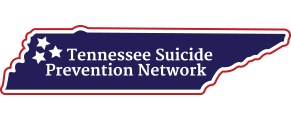No one experiences suicidal ideations the same way as someone else. Understanding the signs, symptoms and side effects of suicidal ideations is a key component toward starting the recovery journey.
Understanding Suicidal Ideations
Learn about suicidal ideations
Suicidal ideations are thoughts about or an unusual preoccupation with ending one’s own life. These ideations can range from fleeting thoughts to laid-out, detailed plans. However, they do not always end in the final act of killing oneself. While the majority of individuals with suicidal thoughts do not carry through with them, some may actually make suicide attempts. Some suicidal thoughts are specifically designed to fail or be discovered, and some are carefully planned to succeed.
Not everyone who is having thoughts of suicide actually wants to die. In most cases these adolescents simply want an end to the physical and emotional pain they are experiencing. These teens view suicide as a last resort attempt to end emotional pain that is causing significant distress in their lives. Due to the severe distress, children and teens who are thinking about suicide see no other way to end their suffering. Additionally, in many cases these individuals who are entertaining the idea of suicide do not ask for help, but that does not mean that they do not need help.
Suicide is a serious topic and should not be taken lightly. If you or someone you love is having thoughts about hurting themselves seek help immediately. It could save someone’s life.
Statistics
Suicidal ideations statistics
The World Health Organization estimates that about 1 million people a year die by suicide. In 2001, over 30,000 people living in the United States died by suicide. Suicide continues to be within the top 10 leading causes of death in individuals between the ages of 10 and 64 years of age. In 2002, it was estimated that over 130,000 individuals were admitted to hospitals in the United States following suicide attempts.
Causes and Risk Factors
Causes and risk factors for suicidal ideations
It’s generally believed that the causes for suicidal thoughts are the result of a number of different factors working together, instead of one identifiable cause. The most common causes are thought to be:
Genetic: Many of the mental illnesses that cause the development of suicidal feelings, such as depression, anxiety disorders, PTSD, and OCD, have a genetic component. Those that have first-degree relatives who have struggled with suicidal behaviors or thoughts, as well as other mental health disorders are more likely to experience suicidal thoughts themselves.
Physical: Many mental illnesses cause decreased levels of dopamine, which is the neurotransmitter that plays a role in the development of pleasurable feelings. When there are lower levels of this brain chemical it can cause individuals to feel depressed and empty. These individuals may experience reduced sensations of pleasure, which can lead to the development of suicidal thoughts and behaviors. Additionally, individuals who have a terminal diagnosis or are living with chronic pain are at increased risk for suicide.
Environmental: Suicidal thoughts may be the result of overwhelming life events that an individual is not able to appropriately cope with. Some of these life events include losses, stressful situations, and tremendous emotional pain. In individuals who are otherwise healthy, sudden and unexpected life changes can cause suicidal ideation. Additionally, those who have a history of suicide threats or abuse are also at a higher risk for suicide in the future.
Risk Factors:
- Presence of a mental health condition, such as depression
- Familial history of addiction and substance abuse
- History of violence, including physical and sexual abuse
- Are bisexual, homosexual, or transgender and living in an unsupportive, hostile environment
- Other conflicts with good friends and family members
- Becoming pregnant
- Having an sexually transmitted infection
- Being the victim of a bully
Signs and Symptoms
Signs and symptoms of suicidal ideations
There are a wide range of signs and symptoms that may be displayed among children and teens whom are contemplating suicide. The severity of these thoughts will depend upon the severity of symptoms from an existing mental disorder and the presence or absence of an active support system, as well as other factors. Most people who are considering suicide give off warning symptoms of their intentions which should never be ignored.
Symptoms of suicidal ideation may include the following:
Behavioral Symptoms:
- Forming a plan for the suicide attempt
- Wanting to be left alone
- Violent or rebellious behaviors
- Talking about having no reason to live
- Running away
- Saying goodbye to loved ones
- Acting recklessly
- Talking about suicide
- Saying things like, “I’m going to kill myself,” “I wish I were dead”
- Decline in work or scholastic performance
- Withdrawing from once-pleasurable feelings
- Sudden and extreme personality changes
- Seeking out lethal means to end their life
- Getting affairs in order – making a will, giving away treasured possessions
- Previous suicide attempts
- Increased usage of alcohol or drugs
Physical Symptoms:
- Insomnia
- Changes in eating patterns
- Weight loss or gain
- Vague somatic physical symptoms
- Neglecting personal appearance
- Worsening of physical health
- Psychomotor agitation
Cognitive Symptoms:
- Difficulty concentrating
- Problems with short-term memory
- Preoccupation with death, dying, or violence
Psychosocial Symptoms:
- Hopelessness
- Depression
- Depression followed by a period of intense happiness and relief
- Despair
- Paranoia
- Delusions
- Psychosis
- Hallucinations
- No hope for the future
- The belief that nothing will get better
- Anger
- Panic attacks
- Angst
- Extreme remorse
- Anxiety
- Anhedonia
- Sudden sense of calm
- Worsening of emotional health
Effects
Effects of suicidal ideations
There are many effects that can come about as the result of suicide attempts. If you’re feeling hopeless about the future and believe suicide is the only answer, the most important thing you can do is to call 911 immediately.
Effects of suicide attempts may include:
- Shame
- Guilt
- Anger
- Damage to vital organs
- Brain death
- Self-loathing
- Coma
- Seizures
- Death
When someone commits suicide they leave behind survivors, such as family members or friends, who often struggle to make sense of the whole situation. Currently there are over 32,000 suicides annually in the United States and it is estimated that for every suicide there are at least 6 suicide survivors. Approximately 5 million Americans became survivors of suicide in the past 25 years. Experiencing the loss of a loved one can be shocking, painful, and unexpected. Some of the common effects suicide survivors experience include:
- Anger
- Numbness
- Deep sadness
- Shock
- Grief (physical, mental, emotional, and spiritual)
- Denial
- Helplessness
- Guilt
- Self-blame
- Shame
- Feeling responsible for not preventing the suicide
- Feeling rejected or abandoned by their loved ones
- Fear
- Depression
- Relief (if your loved one was suffering)
- Development of PTSD
Co-Occurring Disorders
Suicidal ideations and co-occurring disorders
Many children and teens with suicidal thoughts and feelings are most often struggling with additional mental health conditions. According to the United States Department of Health and Human Services, over 90% of individuals who commit suicide have another co-occurring mental illness. The most common co-occurring disorders include:
- Depressive disorders
- Post-traumatic stress disorder
- Bipolar disorder
- Schizophrenia
- Borderline personality disorder
- Substance abuse disorders
- Alcoholism
- Paranoia
- Dysthymia
- Personality disorders
- Anxiety disorders











